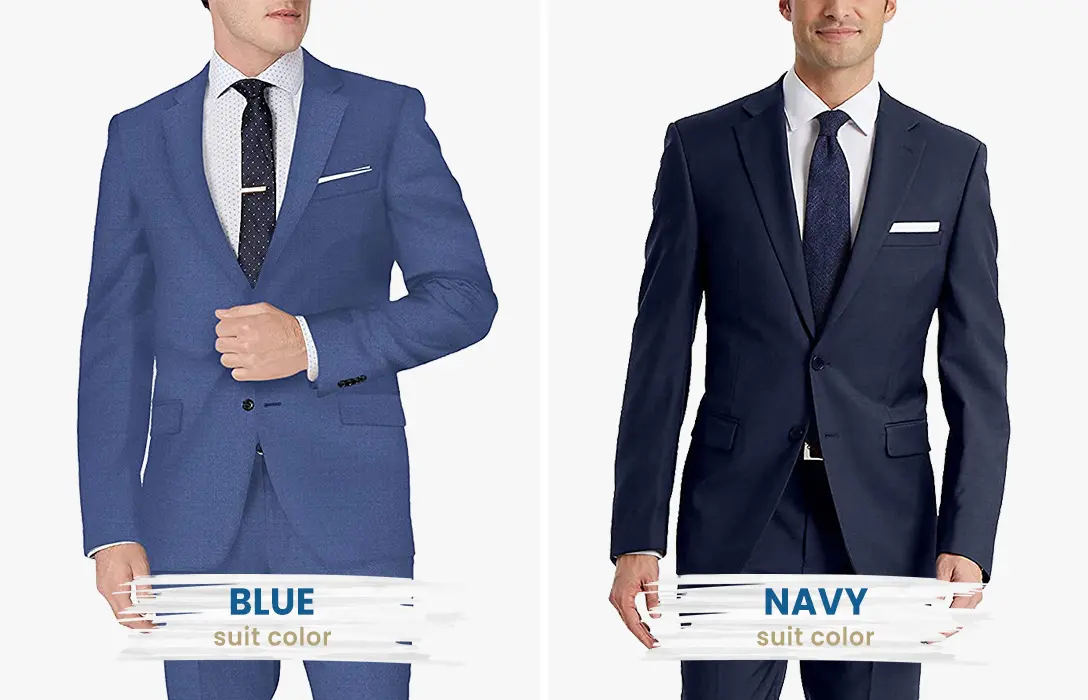Color has always played a powerful role in how we present ourselves to the world. From fashion runways to boardrooms, red carpets to political stages, the hues we choose say more than words ever could. Among men’s suit colors, two shades of blue stand out for their enduring popularity and distinct impressions: navy blue suits and royal blue suits.
Navy blue suits have long been the classic go-to—timeless, reliable, and deeply associated with professionalism, authority, and corporate dress codes. It’s the color of uniforms, business meetings, and formal events, symbolizing stability and trust. On the other hand, royal blue suits, with their brighter and more vibrant tone, have emerged as a favorite in recent years, offering a fresh, confident alternative that commands attention without sacrificing sophistication.
Whether you’re attending a gala, negotiating a deal, or making a public appearance, the choice between navy vs royal blue suits can subtly influence how you’re perceived. From entertainment icons and celebrities to political leaders and businessmen, which shade of blue to choose is a question rooted in modern style and strategic image crafting.
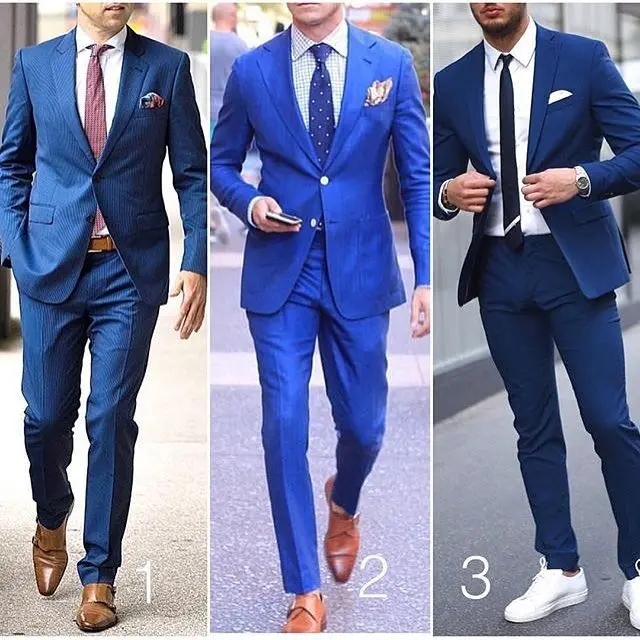
Background and Evolution of Navy Blue Suits
For decades, navy blue suits have been the cornerstone of men’s formalwear, deeply ingrained in professional and social settings. Originating from the British Royal Navy’s uniforms in the 18th century, navy blue was chosen for its practicality and formality. Over time, it evolved into a symbol of professionalism, authority, and reliability.
In business and corporate culture, navy blue suits became synonymous with trustworthiness and competence. The color’s dark, subdued tone communicates seriousness without the harshness of black, making it ideal for interviews, board meetings, and official ceremonies. It’s a staple for politicians, executives, and anyone aiming to project confidence through conservative style.
Navy blue’s versatility is another reason for its long-standing popularity. It pairs well with a wide range of shirt and tie combinations and suits various skin tones, which explains why navy suits remain a wardrobe essential. Its timeless appeal means it rarely goes out of fashion, making it a safe and strategic choice for formal occasions and everyday business attire alike.
In summary, navy blue suits have earned their place as the “go-to” color for men who want to look polished and professional while maintaining an air of traditional respectability.
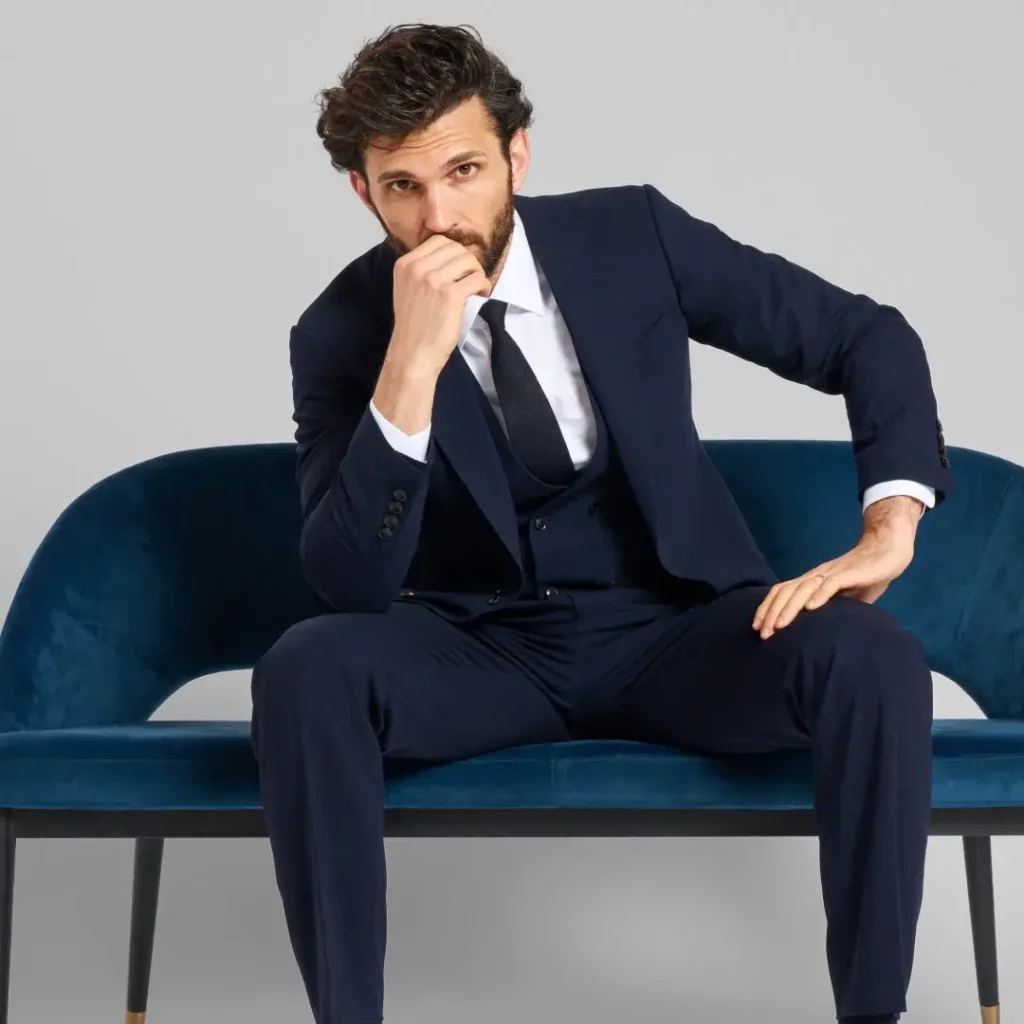
Background and Evolution of Royal Blue Suits
While navy blue has long been a symbol of tradition and formality, royal blue suits have surged in popularity as a modern, stylish alternative that injects vibrancy and confidence into men’s fashion. Royal blue, a brighter and more saturated shade, has roots in regal and ceremonial attire, historically associated with nobility, power, and prestige.
In recent decades, royal blue has transitioned from formal uniforms and special occasions into mainstream menswear. Its bold hue appeals to those who want to stand out without straying too far from classic blue tones. This color strikes a balance between authority and approachability, making it a favorite among celebrities, entertainers, and increasingly, political figures seeking to project both strength and charisma.
Unlike the conservative navy suit, royal blue suits communicate energy, creativity, and modernity. They photograph well under various lighting conditions, a key reason for their rise in televised events and public appearances. Stylists and fashion experts praise royal blue for its versatility—it pairs beautifully with crisp whites, pastel shirts, and bold accessories, offering endless styling possibilities.
Today, royal blue suits symbolize a fresh take on classic menswear, embodying sophistication while embracing contemporary flair. This evolution reflects changing attitudes toward power dressing, where vibrancy and confidence are just as important as tradition.
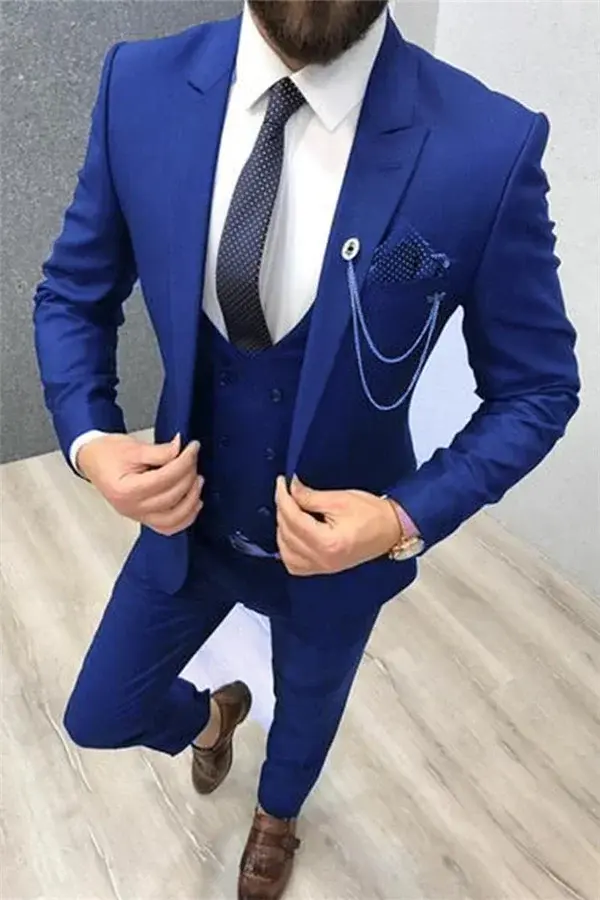
Visual and Psychological Comparison of Royal Blue vs. Navy Blue
Here’s a clear, concise tabular comparison of Royal Blue vs. Navy Blue Suits focusing on hue, psychological impact, and media considerations:
| Aspect | Royal Blue Suits | Navy Blue Suits |
| Hue & Brightness | Brighter, more vibrant and saturated shade; bold and eye-catching | Darker, muted, classic shade; subtle and conservative |
| Public Perception | Conveys confidence, charisma, modernity, and approachability | Signals seriousness, authority, tradition, and reliability |
| Psychological Impact | Energizing and engaging; suggests creativity and openness | Calming and trustworthy; evokes stability and professionalism |
| Media & Camera Friendliness | Photographs well; stands out on TV and digital media under varied lighting | Can appear dull or blend into dark backgrounds; less visually striking |
| Suit Styling Versatility | Pairs well with lighter, pastel, or bold accessories for a fresh look | Matches a wide range of conservative shirts and ties; very versatile |
| Use in Political/Entertainment Circles | Favored for making a memorable impression; modern and dynamic image | Traditional choice; used to convey steadfastness and formality |
Political Implications and Trends: Why Royal Blue Suits Are Rising in Popularity
In political and professional circles, color choice in suits has always been a subtle but powerful tool for communication. Recently, royal blue suits—often called cobalt or Neapolitan blue—have gained traction as a favored alternative to traditional navy blue. This shift is particularly visible among politicians, media personalities, and business leaders aiming to project confidence and distinctiveness.
A notable example is President Donald Trump, who has consistently favored brighter blue suits over the classic midnight or navy shades. This choice may be strategic: the vibrant blue echoes the colors of the American flag when paired with a white shirt and red tie, creating a subconscious link between the wearer and patriotism, especially in photographs and televised appearances. The brighter hue also stands out better on camera, a likely reason Fox News commentators and other media figures have embraced similar shades.
Beyond symbolism, royal blue appeals to those who want to “stand apart,” as tailor Alan Flusser explains. It’s a color favored by personalities seeking to blend professionalism with a bold, modern image—ranging from celebrities like Ryan Gosling to younger power dressers in finance and politics who want to break from their predecessors’ more conservative wardrobes.
This trend represents a broader cultural shift from discreet, conformity-driven dress codes toward a more expressive “showy masculinity.” It echoes the 1980s ethos popularized by figures like Gordon Gekko and fits the modern climate where visual impact is part of influence.
However, royal blue suits have yet to become a dominant trend. Many political figures and cabinet members still opt for navy, using accessories like red ties or hats to signal allegiance rather than changing their suit color. Industry experts suggest that while royal blue is gaining visibility, it remains a niche choice—likely to grow as a standard option in men’s professional wardrobes rather than a wholesale fashion revolution.
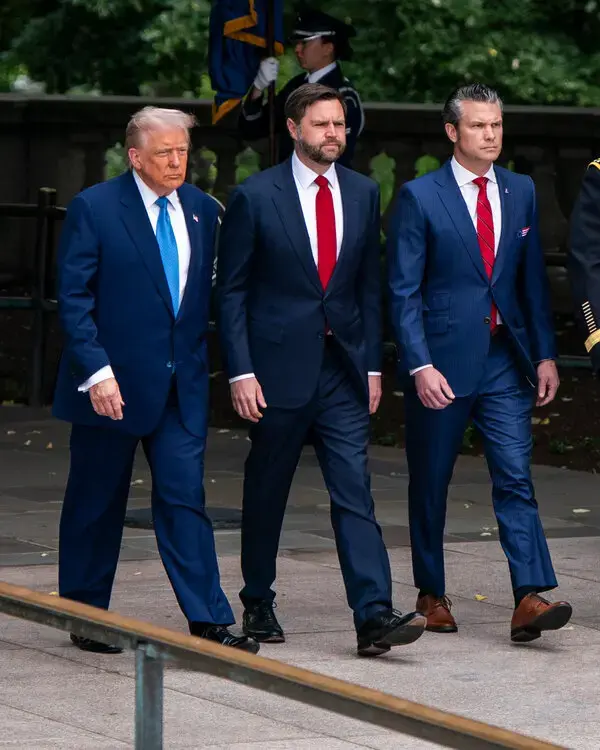
Conclusion
Royal blue suits are increasingly preferred because they strike a compelling balance between tradition and modernity. While navy blue has long symbolized stability, authority, and timeless professionalism, royal blue introduces vibrancy and approachability without sacrificing sophistication. This makes it especially appealing to politicians and public figures who want to project confidence, charisma, and a forward-looking image.
The evolving preference reflects broader shifts in how image and identity are crafted in political and professional spheres. In an age of constant media scrutiny and visual storytelling, a royal blue suit can convey energy and distinction, helping wearers stand out while still adhering to the expectations of formal dress.
Ultimately, the choice between royal and navy blue suits is about more than just color—it’s about the subtle messaging embedded in style. As political wardrobes continue to evolve, royal blue is carving out its place as a symbol of modern leadership that honors tradition but embraces the dynamic demands of today’s world.
FAQs About Navy Blue vs Royal Blue Suits
1. What are the main differences between navy blue suits and royal blue suits?
Navy blue suits are darker and more traditional, often associated with formality and professionalism. Royal blue suits are brighter, more vibrant, and convey confidence and modern style.
2. Which suit color is better for formal business settings: navy blue or royal blue?
Navy blue suits are typically preferred for conservative business environments due to their classic and understated appearance. Royal blue suits can work in business but are better suited for creative or modern professional settings.
3. Are royal blue suits appropriate for weddings and social events compared to navy blue?
Yes! Royal blue suits are popular for weddings and social occasions because they stand out and add a fresh twist, while navy blue remains a timeless, versatile choice for both formal and semi-formal events.
4. How do royal blue and navy blue suits affect public perception in politics and entertainment?
Navy blue suits project trustworthiness and authority, while royal blue suits exude energy, charisma, and approachability, making them favored by entertainers and modern political figures.
5. Which suit color is more camera-friendly for public appearances: navy blue or royal blue?
Royal blue suits tend to be more camera-friendly as their brighter shade pops on screen, while navy blue can sometimes appear flat or blend into darker backgrounds under studio lighting.
6. How can I style accessories differently with royal blue vs navy blue suits?
Royal blue suits pair well with lighter shirts, bold ties, and brown shoes for a contemporary look. Navy blue suits match well with classic white shirts, conservative ties, and both black or brown shoes for a traditional style.

